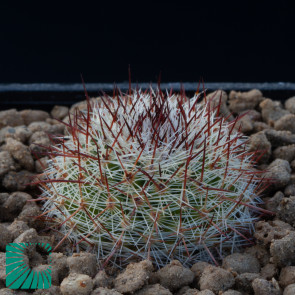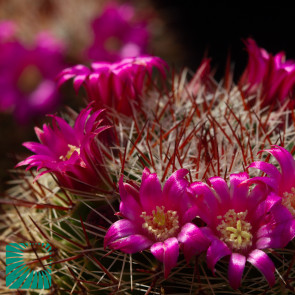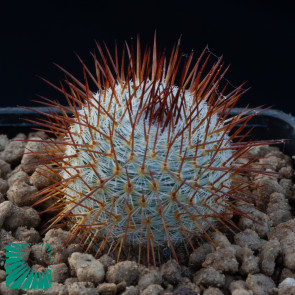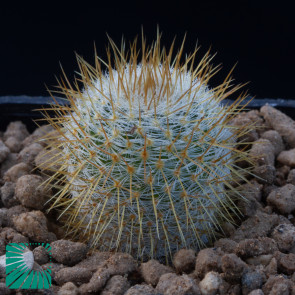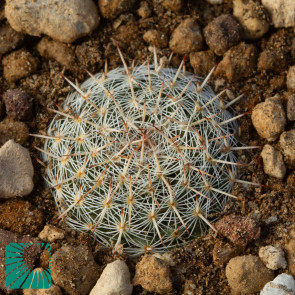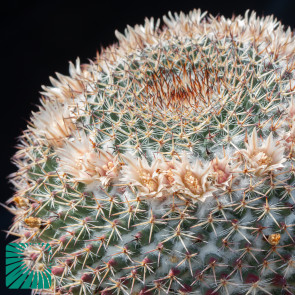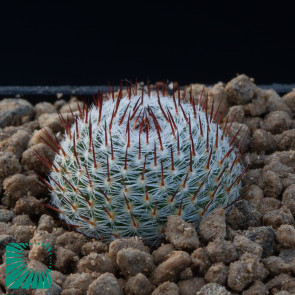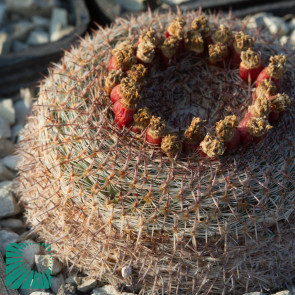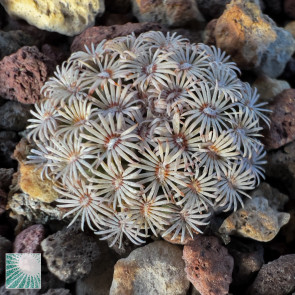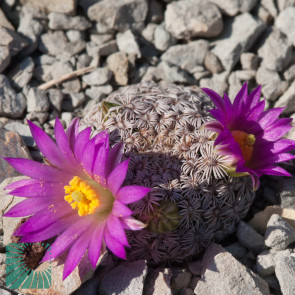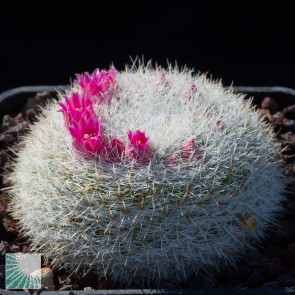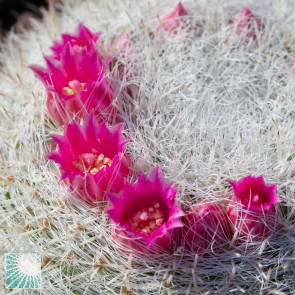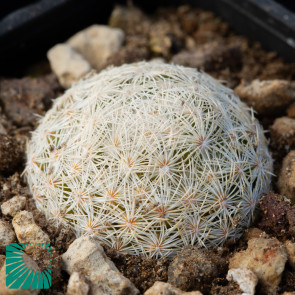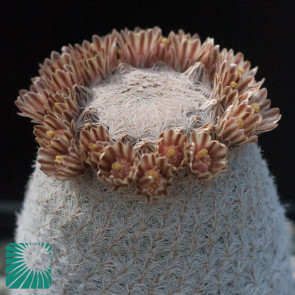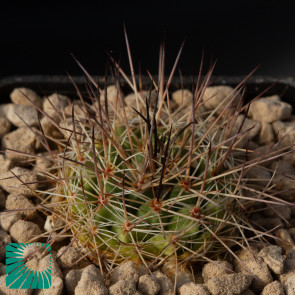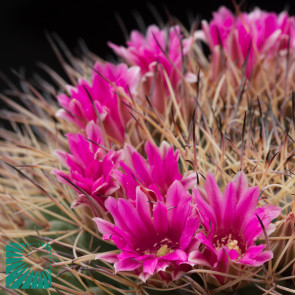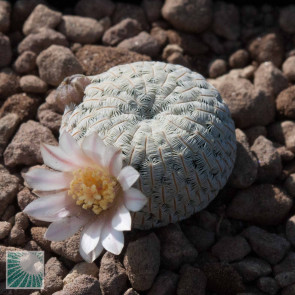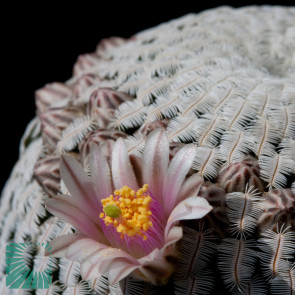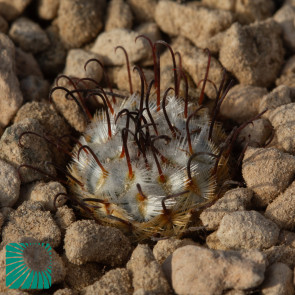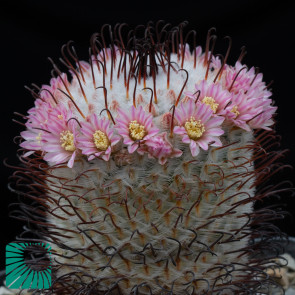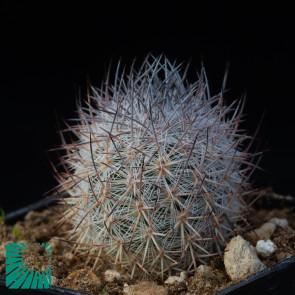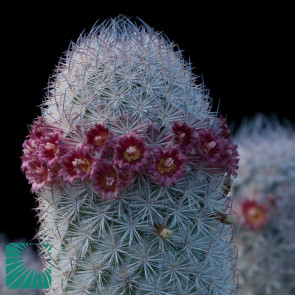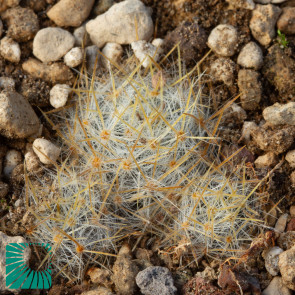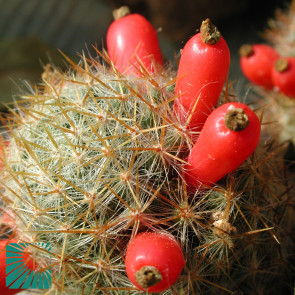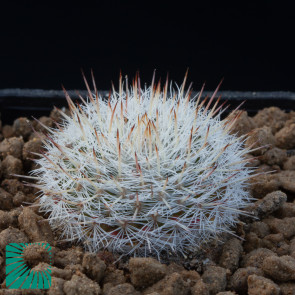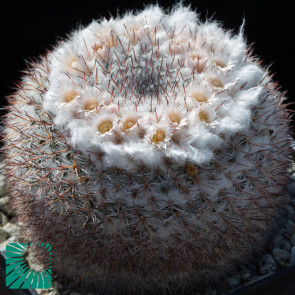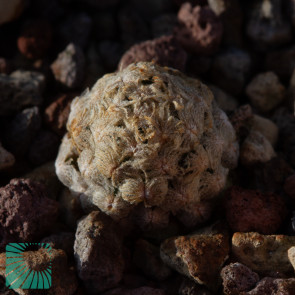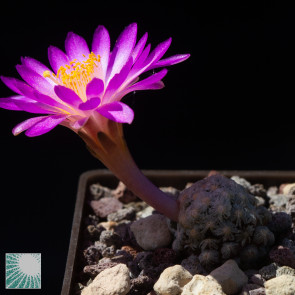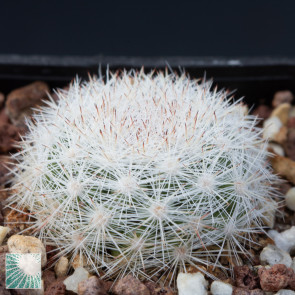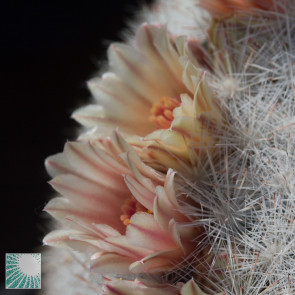You have no items in your shopping cart.
Cacti
-
Mammillaria duoformis
1600m Yanu Piedra, Mexico.
Easy to grow, interesting for its beautiful magenta flowers. Learn More -
Mammillaria flavicentra
Above Pala, Coxcatlán PUE Alt. 2250 m
Interesting for its robust spines, not too long and yellow to brown in colour. Generally solitary, it grows slowly. Learn More -
Mammillaria formosa
Canyon Carbonera, Coahuila, Mexico.
Interesting for the compact shape of the stem which grows dichotomously over the years, forming large moulds. Very resistant to cold and calcareous soil. Learn More -
Mammillaria formosa
Salinas, San Luis Potosi, Mexico.
Robust, adaptable and slow-growing plants. Their stem is initially spherical, then briefly cylindrical with a sunken apex. Tend to be solitary, with age they branch out dichotomously Learn More -
Mammillaria hernandezii
Very slow growing species with small, solitary stem and fleshy roots. Interesting for the radial arrangement of the small thorns and the showy flowers, of a beautiful amethyst colour. It suffers from water stagnation and resists intense cold if well dried. Learn More -
Mammillaria klissingiana
Jaumave, Tamaulipas, Mexico.
In nature it grows on the edge of escarpments in poorly sunny positions, or among the rocks. Interesting for the spherical body covered with short white spines, among which the pink flowers emerge. Initially single, over the years it branches through lateral ramifications. Growth is quite slow. Learn More -
Mammillaria lasiacantha ssp. magallanii
Cerro Bola, Caoh., Mexico.
Interesting for the dense covering of needle-like, short spines that protect the plant from excessive sun. The flowers appear early, in the winter months. The stem is usually globular, solitary and never wider than 4-5 cm. It resists intense cold if well dried. Learn More -
Mammillaria melanocentra
Ex D Cowper Coll. Saltillo, Mexico.
interesting for the globular, conspicuous stem and for the large pink flowers with darker streaks. Easy to grow. Learn More -
Mammillaria pectinifera
Interesting species due to the short, combed spines. Of rather slow growth, it is first spherical and then briefly cylindrical in shape, generally solitary but occasionally producing one or more lateral branches. The flowers emerge from late winter to early spring and are whitish or pink in color. The fruits protrude only slightly between the thorns. The species is widely distributed but threatened with extinction. Learn More -
Mammillaria perezdelarosae
interesting for the vitreous, combed radial spines and the single, hooked, black central one. The flowers are pink. Initially globular and solitary, the stem then briefly becomes cylindrical and branched. Growth is slow. Learn More -
Mammillaria pottsii
Higueras, Coahuila, Mexico.
Easy to grow, it resists cold and calcareous soils well. It is interesting for its lead-colored thorns and its dense crown of small burgundy flowers. Generally single, sometimes branches abundantly at the base. Learn More -
Mammillaria prolifera
Sabinas, Hidalgo, Mexico.
very widespread since time immemorial, due to the ease with which it propagates by cutting the lateral branches. Interesting for the red fruits, long persistent, edible with a slightly sour taste. Learn More -
Mammillaria ritteriana
Ramos Arispe, Coah, Mexico.
interesting for the abundant fluff that appears between the tubercles near the crown of flowers, which are white or slightly pink and for the corpulent stem. Learn More -
Mammillaria theresae
Among the dwarf mammillariae it is one of the most sought after, due to its sensational blooms and areoles with soft, radial spines, similar to small umbrellas. The stem is soft and generally does clump slightly with age. The fleshy roots require the use of deep pots and a certain caution with watering. It prefers mineral soils and resists frost well during the winter, if kept well dry. Learn More -
Mammilloydia candida
Jaumave, Tamaulipas, Mexico.
Interesting plant due to the spherical shape and the white color of the stem which lengthens briefly over the years. In nature, it loves to live in association with thorny shrubs under which it finds protection. Robust in cultivation, in winter it resists frost well if kept dry. Learn More

